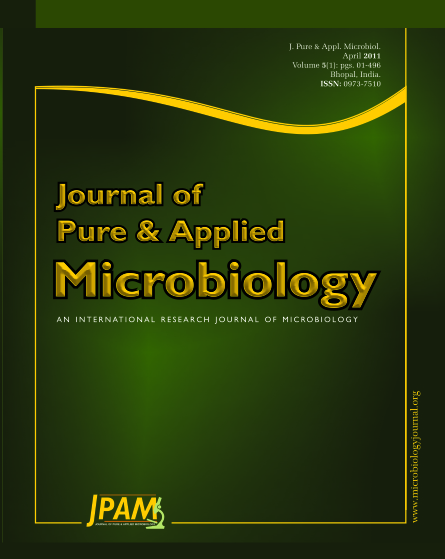Udupi district is a town located near Mangalore, Karnataka state. Temperature ranges from 30 to 35 degrees centigrade in daytime and is around 22 – 22° C ± 2°C during night. Humidity is normally high most of the time. The rainy season is from April to September.Solid waste samples weighing approximately 2 to 2.5 Kgs were randomly taken from Karkala and Udupi districts and then transferred into the nylon bags and brought to the laboratory for further evaluation for the incidence of bacteria.The objective of the project includes the collection of the Solid waste sample, isolation of the microflora and then the identification of these micoflora. Some of these methods are Blotter method. And to study wheather the organisums are having the capacity to produce cellulose enzyme., Cellulose is degraded by three major classes of hydrolases. These three classes have been isolated and purified from fungi. They range widely in temperature and pH optima, but the most common enzymes are most active at pH 5.5, 55oC. Three cellulases are of interest: 1) endoglucanase (carboxymethyl cellulase or CMCase), 2) cellobiohydrolase (CBH or filter paper activity) and 3) b-glucosidase. Endoglucanase (CMCase) attacks randomly in the interior of the cellulose structure. It is not very active against crystalline cellulose, but they are capable of hydrolyzing substituted cellulose such as carboxymethyl cellulose. It produces cellulodextrins also known as cellulooligosaccharides. Cellobiohydrolase (CBH) also known as exocellulase attacks crystalline cellulose from the non-reducing end and produces cellobiose. â-glucosidase hydrolyses cellobiose to glucose.
Blotter method, Cellulose, Cellobiohydrolase, Hydrolases
© The Author(s) 2011. Open Access. This article is distributed under the terms of the Creative Commons Attribution 4.0 International License which permits unrestricted use, sharing, distribution, and reproduction in any medium, provided you give appropriate credit to the original author(s) and the source, provide a link to the Creative Commons license, and indicate if changes were made.


